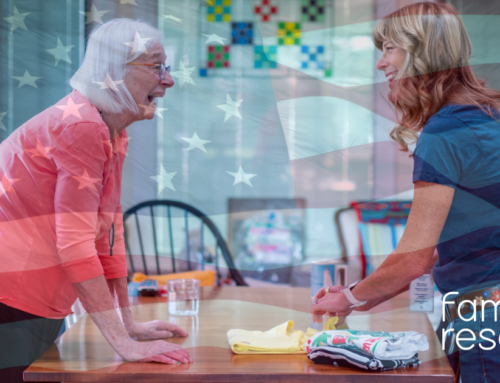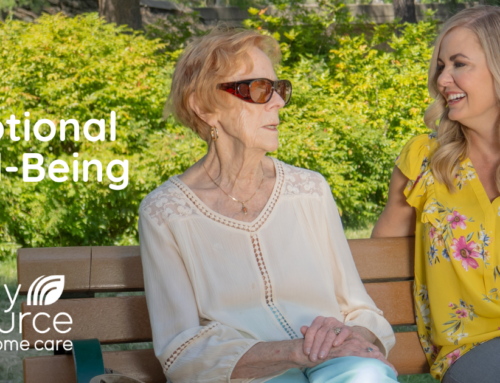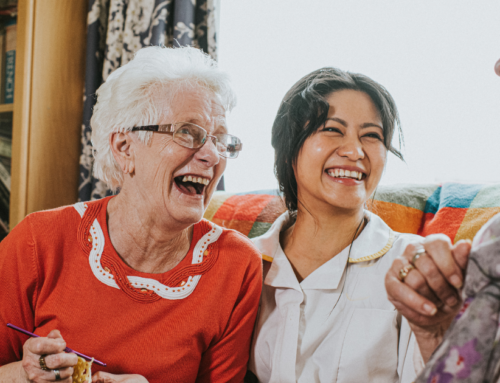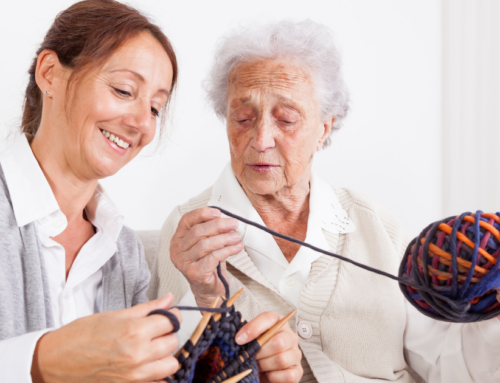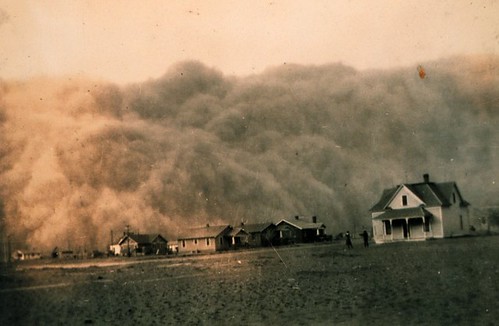 Last month Caregiver Connections provided an overview of emergency preparedness and looked at some of the barriers we face in preparing ourselves and our families to respond to natural disasters such as an earthquake, snowstorm, hurricane-force wind, urban or rural wildfire, or flooding. We spoke to Barbara Jensen, a Certified Healthcare Emergency Professional, who told us that lack of preparation is the biggest challenge in emergency management. She said that in the event of a severe emergency, police officers and firefighters will not be able to rescue everyone, so we need to take responsibility for ourselves. This month we will explore how to develop an Emergency Plan and create an Emergency Supply Kit. We will also consider what to do if you are with your older or disabled client or family member when an emergency situation occurs. At the end of the article is a list of helpful resources that will help you become better prepared.
Last month Caregiver Connections provided an overview of emergency preparedness and looked at some of the barriers we face in preparing ourselves and our families to respond to natural disasters such as an earthquake, snowstorm, hurricane-force wind, urban or rural wildfire, or flooding. We spoke to Barbara Jensen, a Certified Healthcare Emergency Professional, who told us that lack of preparation is the biggest challenge in emergency management. She said that in the event of a severe emergency, police officers and firefighters will not be able to rescue everyone, so we need to take responsibility for ourselves. This month we will explore how to develop an Emergency Plan and create an Emergency Supply Kit. We will also consider what to do if you are with your older or disabled client or family member when an emergency situation occurs. At the end of the article is a list of helpful resources that will help you become better prepared.
As no one knows when or where a disaster may occur, it is important to prepare for the three different locations you may find yourself: at home, at work, or in your car.
AT HOME
When a disaster strikes, most of us hope that we will be at home with our loved ones. If you have developed a Family Preparedness Plan everyone will know where to find flashlights, batteries, candles and even a propane heater.
Things to Buy – Things to Learn
Understanding that the electricity may be out, and gas main’s broken, you will have stocked your home with enough non-perishable food and water to last for 2 weeks. Plan on one gallon of water per person, per day. And don’t forget food and water for your pets. You should also have enough cash to last you for two weeks. If you have natural gas in your home, have an automatic shut-off, earthquake valve installed by the gas company, or contact them now about where and how to turn off the gas. It is also good to know where the shut-off valve is for your water.
Where are Your Loved Ones?
Even if you are at home, other members of your family may not be. It is recommended that your family choose one designated out-of-state emergency contact that each family member can call to report where they are and if they are okay. Further, the Federal Emergency Management Agency (FEMA) suggests making copies and arranging safe off-site storage for the following important documents:
Vital Personal Records
Includes photocopies of drivers licenses, birth certificates, naturalization or citizenship documents, and Military I.D. cards. Social Security cards, passports, marriage license and divorce papers should also be copied.
Photographs of Family and Pets
To help find each other if separated, keep a recent photograph of family members and pets. Include a copy of your dog or cat’s microchip number.
Insurance Policies
Include copies of all policies including homeowners, automobile, health, and life insurance; car registration and car title.
Financial Information
Record relevant account numbers for all financial matters. Include bank contact information and copies of statements from all bank or credit union accounts as well as investment firms such as brokerages, retirement accounts, and credit card companies. Include a copy of the previous year’s tax return (update annually!).
Property Records
Copy the deed or mortgage documents to your house. If you rent, make a copy of the lease or rental agreement.
Medical Information
For all members of the household, make copies of ongoing prescriptions plus records of immunizations, allergies, health insurance I.D. cards, and names and contact information for primary physicians. Include any crucial medical records about diagnosis and treatments.
Estate Documents
Include a copy of your will, living will, power-of-attorney, and titles and deeds to any property you own.
AT WORK
Those working in health-related services and who are on the job when an emergency occurs must understand that they are on duty. By having prepared your own family and home in advance of a disaster, you will be able to focus on the job and fully attend to the needs of your aged or disabled client, patient or loved one. While it is not the responsibility of the caregiver to prepare a client’s home for emergency situations, it is recommended that water and gas mains be located, and the information posted in a central location. Having extra non-perishable food and water in the home will benefit both you and your client/loved one.
IN YOUR CAR
We spend so much time in our cars, it makes sense to keep a well-stocked disaster bag in the trunk. The bag should contain food and water for three days, a change of clothing, a first aid kit, prescription medication, an extra pair of eyeglasses, personal care items, sturdy, hard-soled shoes, and a warm coat or blanket. It may also be useful to have sanitation supplies such as liquid detergent and disinfectant.
Review & Update Annually
Emergency Preparedness is not something you do once and then forget about it. Children need to be reminded about the emergency contact, and water, medication, and food will expire and will need to be rotated out. Many families choose a day that they annually change the batteries on their smoke and carbon monoxide monitors. As part of your Family Preparedness Plan, get in the habit of updating your Emergency Preparedness Kit at the same time.
Emergency Preparedness Kit
There are numerous useful lists on the internet. See the websites listed below. A well-stocked kit will contain items that fall into the following categories:
- Food and Water
- First Aid and Personal Items
- Clothing and Bedding
- Sanitation Supplies
- Communication & Information
One Step at a Time
We understand that preparing for an emergency can feel overwhelming. For that reason, it is recommended that we take preparedness one step at a time. To that end the following website Prepare in a Year provides instructions for taking one hour each month, for a period of one year, to become fully prepared for an emergency. The following websites provide additional useful information about various types of disasters and how to best prepare for each one. They also include detailed lists and suggestions on what to include in your Emergency Preparedness Kit.
https://mil.wa.gov/preparedness
https://www.earthquakecountry.org/disability/
https://www.fema.gov/pdf/areyouready/areyouready_full.pdf
https://www.safehome.org/resources/emergency-prep-guide/
https://emergency.cdc.gov/protect.asp

